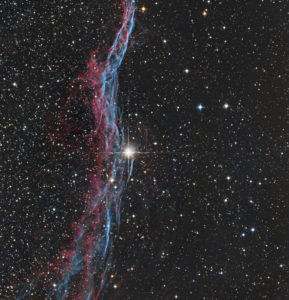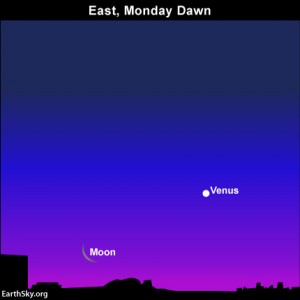One Pier Available For Lease
- July 8, 2017
Great news! We will have a pier available NOW. Pier rental is $575 per month and includes electric and internet. Contact us for more information. Experience Bortle 1 sky.
Great news! We will have a pier available NOW. Pier rental is $575 per month and includes electric and internet. Contact us for more information. Experience Bortle 1 sky.
 “Our home observatory in Tucson was dismantled, and the telescope equipment was moved to a very dark sky location in Pie Town, New Mexico. Our friends, John and Janet Evelan, own SkyPi Remote Observatory, and the equipment is set up and operational in one of their pod observatory buildings. I now operate the telescope completely by remote control over the internet from my home in Rhode Island! The technology is amazing, and with the help of John and Jan I can conduct great imaging under extremely clear and dark skies at an elevation of about 7900 feet.
“Our home observatory in Tucson was dismantled, and the telescope equipment was moved to a very dark sky location in Pie Town, New Mexico. Our friends, John and Janet Evelan, own SkyPi Remote Observatory, and the equipment is set up and operational in one of their pod observatory buildings. I now operate the telescope completely by remote control over the internet from my home in Rhode Island! The technology is amazing, and with the help of John and Jan I can conduct great imaging under extremely clear and dark skies at an elevation of about 7900 feet.
Great news! We will have a pier available on August 1st. Pier rental is $650 per month and includes electric and internet. Contact us for more information. Experience Bortle 1 sky.

Mercury, the solar system’s innermost planet, orbits the sun inside of Earth’s orbit. Therefore, Mercury always stays close to the sun in Earth’s sky and is often lost in the sun’s glare. But Mercury reaches its greatest elongation – greatest angular distance – east of the sun on May 25, so this world can now be spotted low in the west-northeast as dusk ebbs into darkness. As always, binoculars help out with any Mercury quest.
The planet Jupiter is the first “star” to pop out after sunset. If you’re familiar with the star Regulus, you can draw an imaginary line from Regulus and past Jupiter to locate Mercury near the sunset point on the horizon. (See sky chart below.) Given a clear sky and unobstructed horizon, Mercury could be visible to the unaided eye about 60 to 90 minutes after sunset. If not, try binoculars.
Although Mercury shines more brightly than Regulus does, you might see Regulus first because it’s not as obscured by the glow of evening twilight. What is the ecliptic?

…and don’t forget the morning sky, which features the dazzling planet Venus and a thin waning crescent moon on Monday, May 26.
Setting times of the sun and Mercury in your sky
At an elongation of 23o Mercury lies far enough east of setting sun to stay out until the end of astronomical twilight (at mid-northern latitudes). By definition, astronomical twilight ends in the evening sky when the sun is 18o below the horizon. For reference, the sun’s diameter equals one-half degree, and your fist at an arm length approximates 10o.
Because Mercury is setting a maximum amount of time after sunset right now, this is your chance to catch Mercury low in the west at late dusk or nightfall. But don’t tarry when seeking this elusive yet surprisingly bright world, for Mercury – even now – follows the sun beneath the horizon around nightfall. At mid-northern latitudes, astronomical twilight ends nearly two hours after sunset, at about the same time that Mercury sets beneath the horizon.
End of nautical twilight and Mercury’s setting time in your sky
We should mention that the Northern Hemisphere enjoys the better view of this particular evening apparition of Mercury. That’s because the ecliptic – the pathway of the planets – hits the horizon at a steeper angle as the sun sets in the Northern Hemisphere sky.
Mercury stands higher over the horizon at sunset in Northern Hemisphere than at comparable latitudes in the Southern Hemisphere. For instance, at 40o north latitude – the latitude of Philadelphia, Pennsylvania – Mercury’s altitude at sunset is about 19o. In contrast, at 40o south latitude – the latitude of Wanganui, New Zealand – Mercury’s altitude is less than 11o at sunset.
No wonder Mercury sets more than 100 minutes after sunset at mid-northern latitudes but less than 80 minutes after sunset at mid-southern latitudes. The farther north you live, the later that Mercury sets after sunset; and the farther south you live, the sooner.
Although this evening apparition of Mercury favors the Northern Hemisphere, everyone worldwide has a reasonably good chance of catching Mercury after sunset right now. Look for Mercury above the sunset point on the horizon some 60 to 75 minutes after sunset.
Mercury might be visible to the unaided eye for another week or so, but binoculars always help out with your search for Mercury, the solar system’s innermost planet.
Bruce McClure EarthSky News
A small icy object within the rings of Saturn might be a brand new moon in the process of being born.
NASA’s Cassini spacecraft has documented the formation of a small icy object within the rings of Saturn that may be a new moon, and may also provide clues to the formation of the planet’s known moons.
Images taken with Cassini’s narrow angle camera on April 15, 2013, show disturbances at the very edge of Saturn’s A ring — the outermost of the planet’s large, bright rings. One of these disturbances is an arc about 20 percent brighter than its surroundings, 750 miles (1,200 kilometers) long and 6 miles (10 kilometers) wide. Scientists also found unusual protuberances in the usually smooth profile at the ring’s edge. Scientists believe the arc and protuberances are caused by the gravitational effects of a nearby object. Details of the observations were published online today (April 14, 2014) by the journal Icarus.
The object is not expected to grow any larger, and may even be falling apart. But the process of its formation and outward movement aids in our understanding of how Saturn’s icy moons, including the cloud-wrapped Titan and ocean-holding Enceladus, may have formed in more massive rings long ago. It also provides insight into how Earth and other planets in our solar system may have formed and migrated away from our star, the sun.
“We have not seen anything like this before,” said Carl Murray of Queen Mary University of London, the report’s lead author. “We may be looking at the act of birth, where this object is just leaving the rings and heading off to be a moon in its own right.”
The object, informally named Peggy, is too small to be seen in images so far. Scientists estimate it is probably no more than about a half mile (about a kilometer) in diameter. Saturn’s icy moons range in size depending on their proximity to the planet — the farther from the planet, the larger. And many of Saturn’s moons are composed primarily of ice, as are the particles that form Saturn’s rings. Based on these facts, and other indicators, researchers recently proposed that the icy moons formed from ring particles and then moved outward, away from the planet, merging with other moons on the way.
“Witnessing the possible birth of a tiny moon is an exciting, unexpected event,” said Cassini Project Scientist Linda Spilker, of NASA’s Jet Propulsion Laboratory in Pasadena, Calif. According to Spilker, Cassini’s orbit will move closer to the outer edge of the A ring in late 2016 and provide an opportunity to study Peggy in more detail and perhaps even image it.
It is possible the process of moon formation in Saturn’s rings has ended with Peggy, as Saturn’s rings now are, in all likelihood, too depleted to make more moons. Because they may not observe this process again, Murray and his colleagues are wringing from the observations all they can learn.
“The theory holds that Saturn long ago had a much more massive ring system capable of giving birth to larger moons,” Murray said. “As the moons formed near the edge, they depleted the rings and evolved, so the ones that formed earliest are the largest and the farthest out.”
The Cassini-Huygens mission is a cooperative project of NASA, the European Space Agency and the Italian Space Agency. JPL, a division of the California Institute of Technology, manages the mission for NASA’s Science Mission Directorate in Washington.
Good morning and good news! It looks like we will have another pier ready for lease in January of 2014 and again in March. The lease price will be less than $1000 per month. If you would like to have your name placed on the list contact us via email.